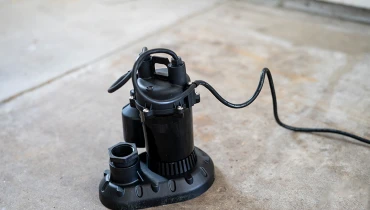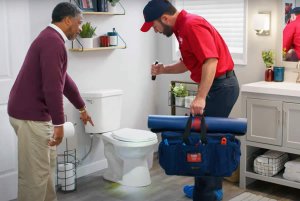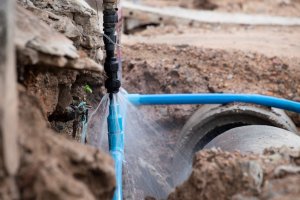Call This Tuesday to Get $50 Off

Local Emergency Plumbers in Fort Worth
Call This Tuesday to Get $50 Off

Local Emergency Plumbers in Fort Worth

The last thing you want to be concerned about during a storm or period of heavy rain is a flooded basement. A backup sump pump can help in that situation. As a failsafe, a backup sump pump makes sure that your basement stays dry even if your primary pump stops working. Even while hiring a professional plumber or plumbing firm is always an option, if you're up for the effort, installing a backup sump pump can be a do-it-yourself project.
In this blog post, our professionals from Mr. Rooter Plumbing will walk you through the process of installing a backup sump pump, making sure your home is well-protected from water damage.
It's important to assess your needs before you get started. Think about if you need a battery-powered, water-powered, or another backup sump pump to your main pump. While water-powered pumps use your water supply to pump out flood water, battery-powered ones are prevalent and function well during power outages.
The installation process will go more smoothly if you have the proper equipment and materials on hand. PVC pipes and fittings, a check valve, a battery (if necessary), a battery box, wrenches, screwdrivers, PVC primer and cement, a hacksaw, and Teflon tape are all items you'll need. A backup sump pump kit is also required.
Choose a suitable location for your backup sump pump. It needs to be close to a power supply and the main pump. Remember that the pump will need to discharge water, so make sure the location has adequate drainage away from the base of your home.
Make sure the sump pit is clean, clear of obstructions, and prepared to receive the new pump. You might need to temporarily remove your primary pump if it is already installed in order to make room for the backup pump.
Connect the check valve to the primary pump's discharge pipe. After it has been pumped out of the sump pit, the check valve stops water from flowing back in, preventing the backup pump from having to work against the water being pushed by the primary pump.
With the aid of PVC pipes and fittings, construct a discharge line for the backup pump. To ensure proper drainage, make sure the pipe is gently inclined downward. To keep the connections secure, use PVC primer and cement.
Install the backup sump pump in the sump pit according to the manufacturer's instructions. As instructed, attach the float switch to the pump. When the water level rises, this switch is activated, starting the pump.
Connect the outlet of the backup pump to the discharge pipe. Utilize PVC priming and cement to create a solid and watertight connection. Water should not be allowed to enter the pipe near the home's foundation.
You may need to attach a backup pump to a power source, depending on the kind you're installing. Install the battery in the battery box and connect it to the pump if it is a battery-operated pump. If it is powered by water, attach it to the water supply. Ensure that all connections are encrypted.
To test the operation of the backup pump, fill the sump pit with water. As the water level rises, check to see if the float switch engages and the pump turns on. Verify that the discharge line is successfully pumping the water out.
Are you in need of a sump pump installation from a dependable plumbing service? Luckily, we at Mr. Rooter Plumbing have dedicated workers ready at your service. Contact our representatives for more information.

Installing a toilet might seem like an easy DIY job, but it’s a lot trickier…
Read More
Apr 16, 2025

Have you ever heard water dripping at night and thought, “Uh-oh, that can’t be good”?…
Read More
Apr 09, 2025

Water heaters are one of those things most people don’t think about until something goes…
Read More
Apr 01, 2025
.jpg)
Have you ever seen water dripping from under your sink or noticed a wet spot…
Read More
Mar 29, 2025
Schedule Emergency Plumbing Repair Services